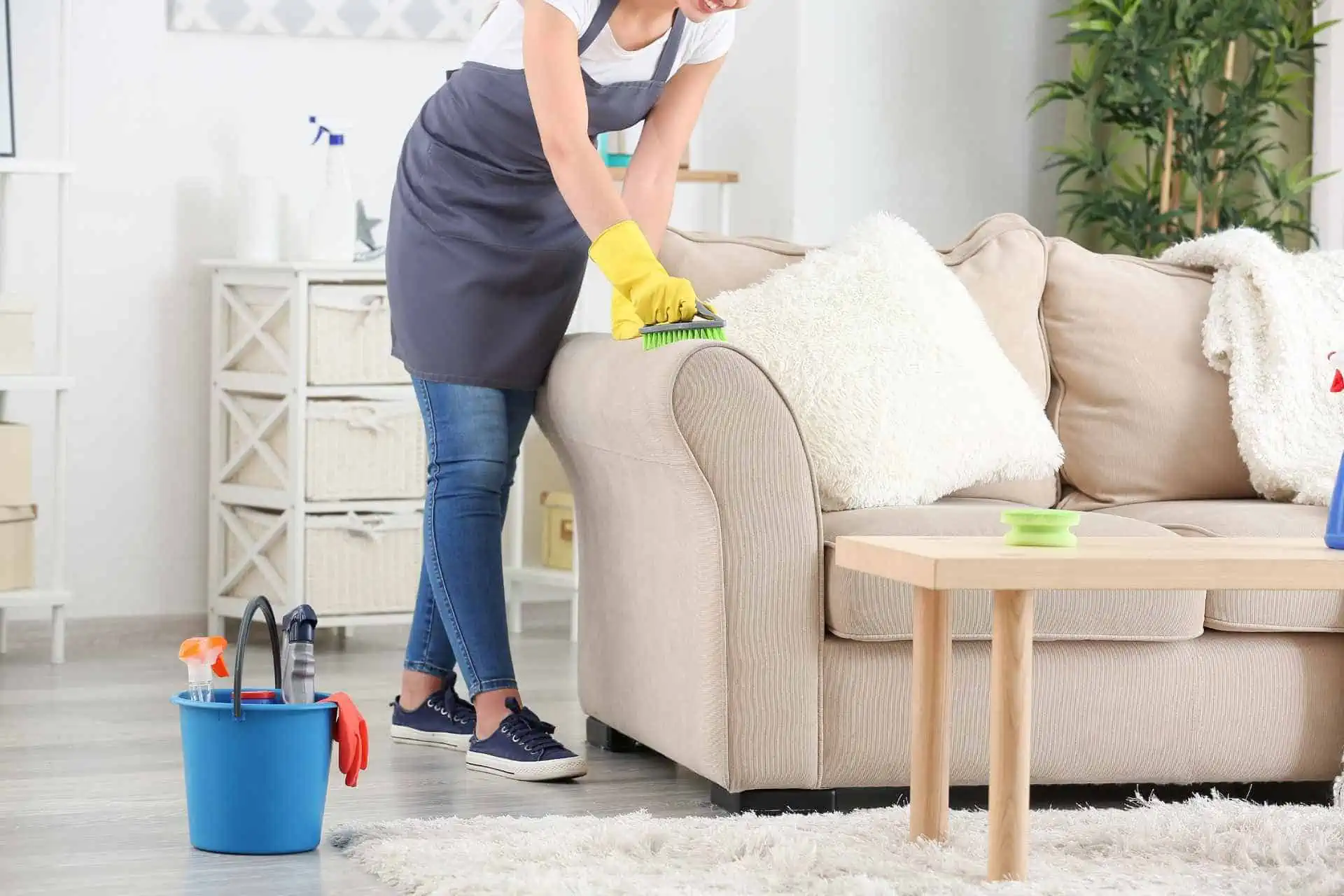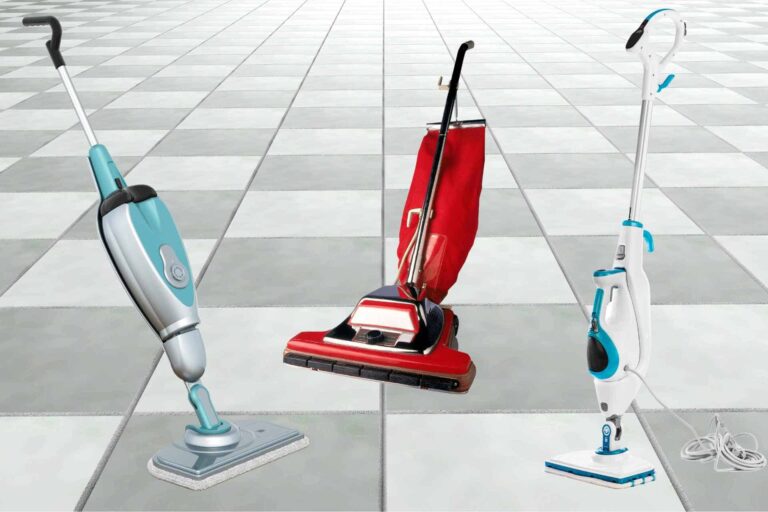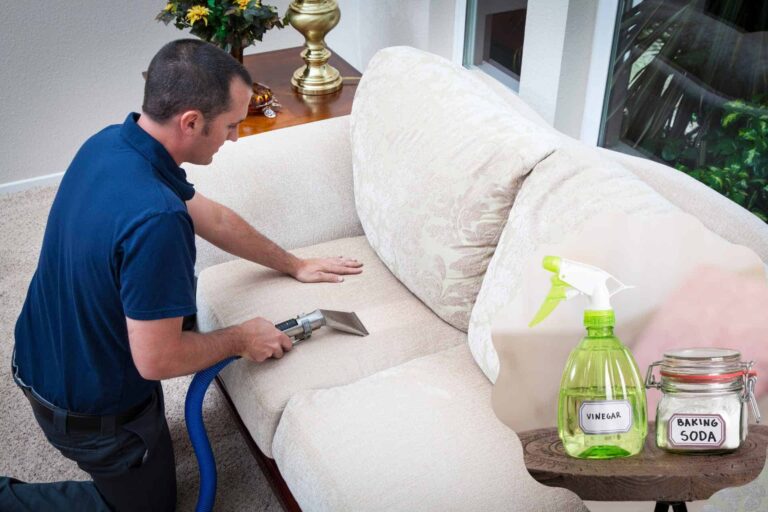Do’s and Don’ts: How to Clean Fabric Sofa Without Damaging It
Fabric sofas are a common choice for many homeowners due to their comfort, aesthetic appeal, and versatility. They indeed add a touch of elegance and warmth to any living space, but maintaining their beauty can be challenging. Understanding how to clean fabric sofa is crucial to keep it looking its best and prolonging its lifespan. This article aims to provide a comprehensive guide on this topic, from the do’s and don’ts to the pro tips, ensuring your fabric sofa stays as fresh and inviting as the day you bought it. Whether you’re dealing with common household spills or seeking to carry out regular maintenance, we’ve got you covered. Let’s embark on this journey of maintaining your fabric sofa’s charm and longevity.
Understanding the Material
Different types of fabric are used in sofa upholstery, each requiring a unique approach to cleaning.
Cotton fabric sofas are popular due to their comfort and durability. However, they can easily absorb spills and stains. Regular vacuuming, spot cleaning with mild soap and water, and professional cleaning are recommended for cotton sofas.
Linen sofas are easy to clean owing to their dirt and stain-resistant properties, but they wrinkle and can’t handle heavy wear. They’re best cleaned with a professional upholstery cleaning service to avoid shrinking the fabric.
Microfiber, a synthetic fabric, is durable and resistive to stains and spills. It can be cleaned with a simple solution of mild soap and water or a specific microfiber cleanser.
Velvet, whether natural or synthetic, requires special care. Velvet attracts dust but doesn’t tolerate heavy cleaning. Vacuuming and professional cleaning services are typically recommended.
Leather isn’t a fabric, but it’s a common upholstery material that requires specific care. Leather sofas can be cleaned with a leather cleaner or a solution of warm water and mild facial soap.
Each material has its own cleaning requirements, so it’s crucial to any fabric sofa owner to recognize these differences.
You may also like:
How to Clean Fabric Sofa’: The Do’s

Vacuuming regularly
Regular vacuuming is a simple yet effective way to maintain the cleanliness and appearance of your fabric sofa. It helps to remove dust, pet hair, crumbs, and other debris that can accumulate on the surface and between the cushions. For best results, use an upholstery attachment to focus on the areas that are hard to reach. It’s recommended to vacuum your sofa once a week, but if it’s heavily used or exposed to pets, consider increasing the frequency. Remember, the cleaner your sofa, the longer it will last and the better it will look.
Spot Cleaning with Suitable Fabric Cleaners
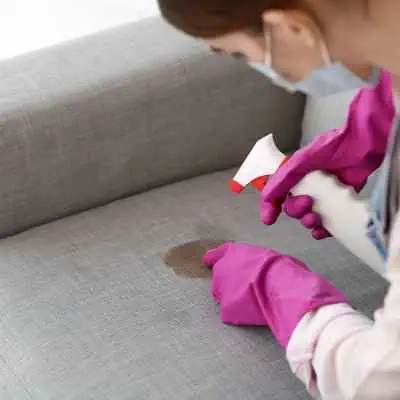
Spot cleaning refers to the practice of focusing on specific stains or spills instead of cleaning the entire piece of furniture. It’s a highly effective strategy when you need to tackle accidents right away. Always use a fabric cleaner suitable for the material of your sofa. Apply a small amount of the cleaner to the stained area, then gently blot with a clean, dry, soft cloth. Avoid rubbing or scrubbing, as it can work the stain deeper into the fabric. After the spot has been cleaned, let it air dry. Remember to always test the cleaner on an inconspicuous part of the sofa first, to ensure it does not damage or discolor the fabric. Regular spot cleaning can help keep your fabric sofa looking fresh and extend its lifespan.
Regular Fluffing and Turning of Cushions
Over time, your sofa cushions may lose their shape and firmness, especially with frequent usage. To counter this, regular fluffing is recommended. Fluffing cushions involve pushing and patting them back into shape, which helps in maintaining their comfort and aesthetics. Besides fluffing, also remember to turn your cushions regularly. Turning involves rotating the cushions from one side to the other and swapping their positions on the sofa. This practice allows even distribution of wear and tear and avoids the formation of dents and sagging in one place. Regular fluffing and turning of cushions not only prolong the life of your sofa but also ensures it remains comfortable and attractive.
How to Clean Fabric Sofa’: The Don’ts
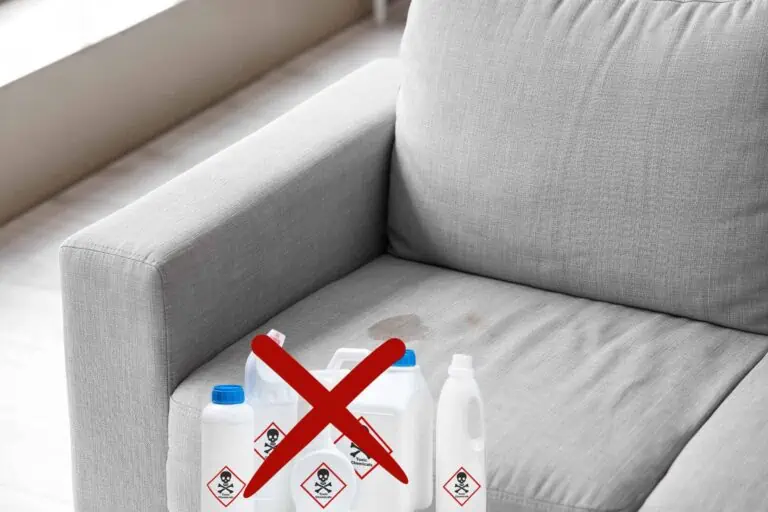
Avoiding harsh chemicals that can damage fabric
Avoiding the use of harsh chemicals is crucial when cleaning your fabric sofa. Many conventional cleaning products contain strong chemicals that may deteriorate the fabric, causing discoloration, dryness, and even holes. Instead, opt for gentler, fabric-friendly alternatives. Homemade solutions, such as mild dish soap mixed with warm water or a vinegar and baking soda mixture, can be just as effective for tackling stains without the risk of damaging your furniture. However, always remember to spot test any cleaning solution on a hidden area of the sofa first to ensure it won’t cause any adverse effects. Keep in mind that the best course of action may also depend on the type of fabric and the specific cleaning instructions provided by the manufacturer.
Avoid Over-Wetting the Fabric

When cleaning your fabric sofa, it’s crucial to avoid over-wetting the material. Excessive amounts of water can seep deep into the cushions, creating a damp environment that encourages the growth of mold and mildew. Furthermore, it can dissolve the adhesive used to secure the fabric to the sofa’s frame, leading to peeling or loosening of the material. To prevent over-wetting, always use a damp cloth rather than a wet one, and dab gently at the stains rather than soaking the area. If you’re using a homemade cleaning solution, apply it sparingly and blot it up as quickly as possible. Remember, the aim is to clean the surface of the fabric, not saturate it.
Avoid Direct Sunlight for Drying
After cleaning, it might be tempting to accelerate the drying process by placing your fabric sofa in direct sunlight. However, this method should be avoided. Prolonged exposure to sunlight can lead to the fabric fading and the material deteriorating prematurely. Instead, allow the sofa to air-dry naturally in a well-ventilated room, away from direct sunlight. If you need to speed up the drying process, consider using a hairdryer on a cool setting or a fan to circulate air around the sofa. Remember to keep a safe distance to prevent potential heat damage to the fabric. This way, you’ll keep your sofa looking fresh and vibrant for longer.
Pro Tips on ‘How to Clean Fabric Sofa
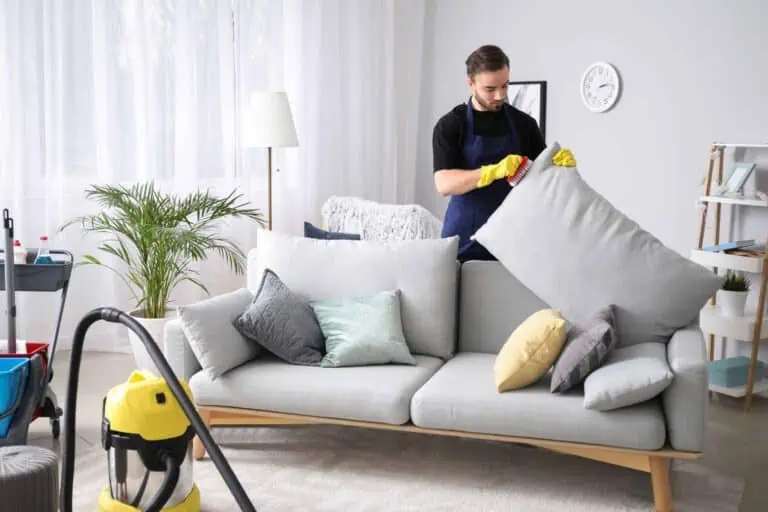
Hiring Professional Cleaning Services for Deep Cleans
While routine cleaning can be handled with DIY methods, there are instances when hiring professional cleaning services may be the most effective solution, especially for deep cleans. Professionals are equipped with industrial-grade cleaning solutions and equipment that can effectively remove stubborn stains and deeply embedded dirt, which might be challenging to eradicate with household cleaning methods. Moreover, they are trained to handle different types of fabric and can customize their cleaning techniques based on the specific needs of your sofa. This ensures thorough cleaning without risking potential damage to your furniture. Though it might seem like an extra expense, professional cleaning can actually extend the life of your sofa, making it a worthwhile investment. Remember to schedule professional cleaning at least once a year, or more frequently if your sofa undergoes heavy usage or is exposed to children and pets.
Using Fabric Protectors for Long-Term Maintenance
An effective way to maintain your fabric sofa’s appearance and extend its lifespan is the use of fabric protectors. These are specially designed solutions that, when applied to your sofa, create a protective barrier against stains and spills. They work by repelling liquids and blocking dirt from settling into the fabric, making cleaning up after accidents a breeze. Moreover, some fabric protectors even offer additional benefits such as resistance against UV rays, thus preventing fabric fading due to sunlight. It’s essential to carefully follow the manufacturer’s instructions when applying these protectors to avoid damaging your sofa. Generally, it is recommended to reapply the fabric protector every six to twelve months, depending on the usage and exposure of your sofa. While fabric protectors can significantly enhance your sofa’s durability, they are not a substitute for regular cleaning. A combination of these protectors with routine cleaning and occasional professional deep cleans would ensure your sofa stays clean, vibrant, and long-lasting.
Conclusion
To recap, ensuring the cleanliness and longevity of your fabric sofa involves several key steps. Firstly, regular vacuuming helps in removing dust and debris that settle on the surface. Spot cleaning, using appropriate solutions and methods suitable for your sofa’s fabric type, serves to address spills or stains immediately. Professional cleaning services should be engaged for in-depth cleaning at least once a year, or more often depending upon the usage and exposure of your sofa. Applying fabric protectors can significantly increase your sofa’s resistance to stains, spills, and sun fading. These protectors need to be reapplied every six to twelve months. Remember, fabric protectors enhance durability but do not replace the need for routine cleaning. A balance of regular cleaning, use of fabric protectors, and professional deep cleaning will keep your sofa looking fresh, vibrant, and extend its lifespan.
Maintaining the alluring aesthetics and durability of your fabric sofa is not a one-time task but a continuity of regular care. The longevity of your sofa significantly depends on your commitment to routine maintenance. Just as a vehicle requires regular oil changes to operate smoothly, your sofa needs continual upkeep to uphold its quality and comfort. By diligently vacuuming, spot cleaning, using fabric protectors, and scheduling professional cleanings, you ensure your sofa withstands the test of time. These simple, yet impactful tasks reinforce the strength of the fabric, enhance resistance to stains and wear, and maintain the vibrancy of color. This continual care gradually extends the life span of your sofa, turning it into a long-term investment rather than an expendable piece of furniture. Remember, the lifespan of your sofa is directly proportional to the care you invest in its maintenance.

